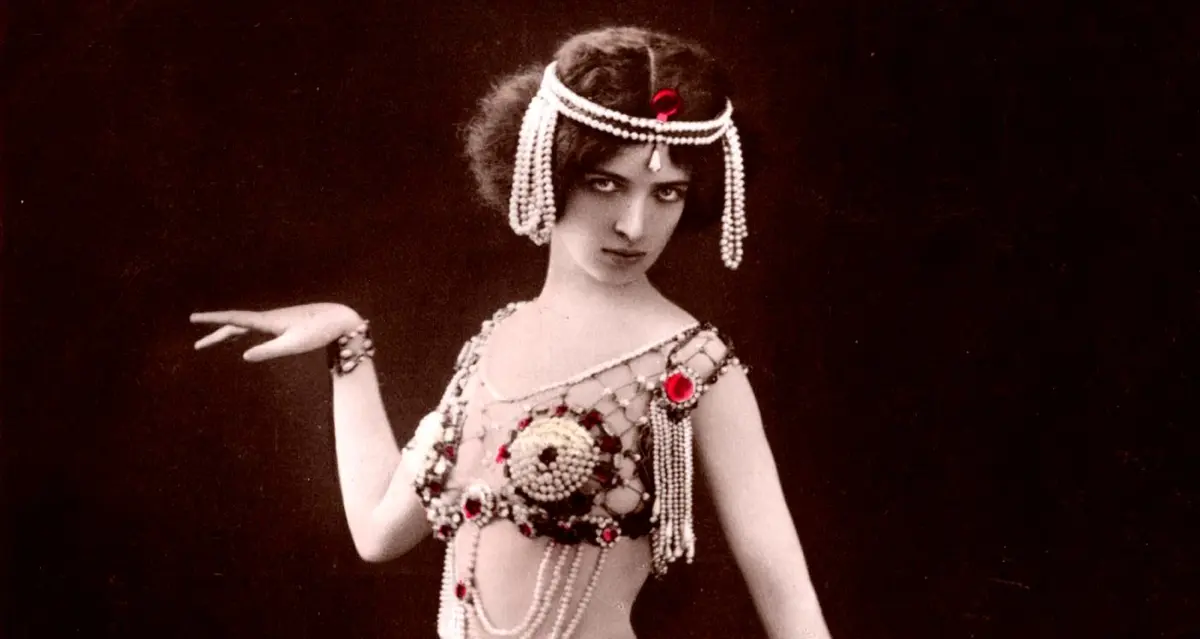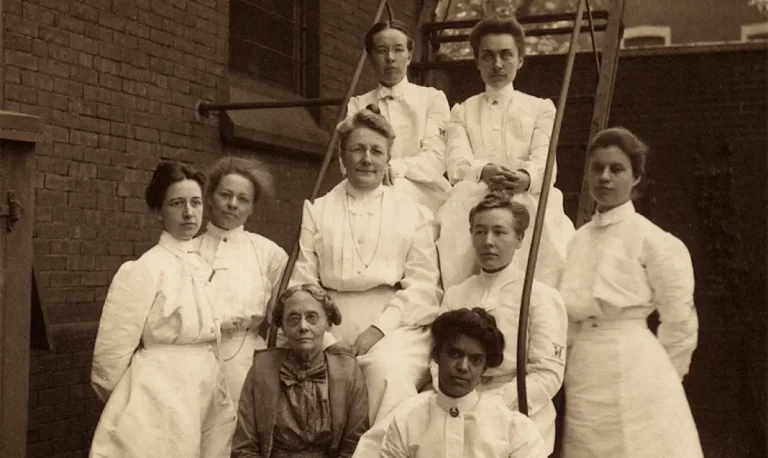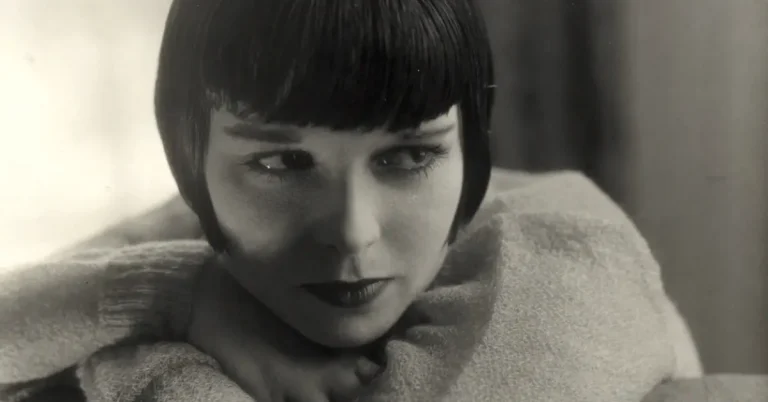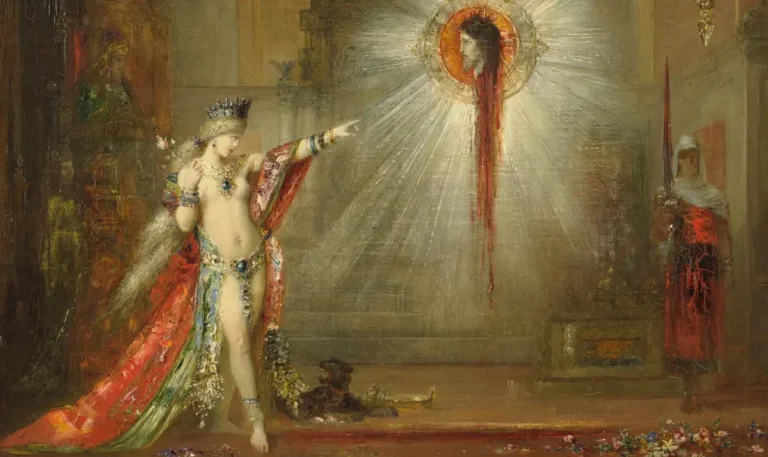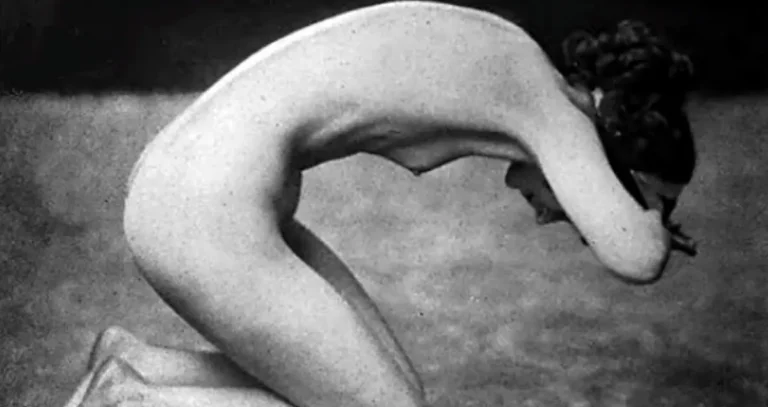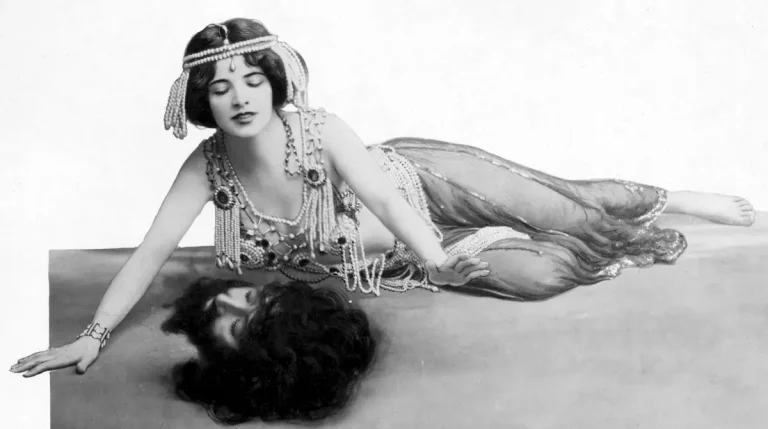Salomania: A Sensational History of Salome in Art, Dance, Film, and Opera
Salomania was a performance phenomenon and cultural craze that swept through America and Europe during the early years of the 20th century. It sprang from a popular reinterpretation of the story of Salome, a figure alluded to in the New Testament who danced for a king and, as a reward, requested a head on a silver platter.
Oscar Wilde lit the fuse for Salomania with his play Salome, published in English in 1894 with Aubrey Beardsley’s iconic illustrations. The play and Beardsley’s drawings conveyed decadence, morbidity, and sensuality—qualities that shocked the Victorian world.
Further controversy followed as the newly eroticized Salome appeared in Richard Strauss’s opera, and the craze grew to a fever pitch with Maud Allan’s 1908 interpretive theatrical dance in London. In the years that followed, the character of Salome appeared on Broadway stages and in silent films. This site explores how the Salome story, in its many incarnations, shaped early twentieth-century popular culture and opened unexpected pathways for spectacle, sensation, and women’s self-expression.

Salome on Canvas: From Dutiful Daughter to Mad Femme Fatale
For centuries, European artists imagined Salome as a dutiful daughter serving her mother’s wicked intention. Beginning in the 19th century, artists began depicting her as a symbol of erotic menace and dangerous feminine power. In paintings by Gustave Moreau and illustrations by Aubrey Beardsley, she emerges as an exotic, hypnotic femme fatale. Influenced by Orientalism and Symbolist aesthetics, these portrayals reveal deeper cultural anxieties about gender, sexuality, and control. Salome’s image eventually crossed into advertising and popular culture, where she continued to challenge—and exploit—the boundaries of morality, desire, and respectability.
→ Read more about Salome in paintings here

Oscar Wilde Makes Salome Sexy and Dangerous
In early 20th-century America, Salome captivated and scandalized the public, transforming her from a biblical footnote into a symbol of sensual rebellion. On stage and in the press, she became a lightning rod for anxieties about gender, sexuality, and modernity. A bare midriff and a suggestive dance were enough to provoke moral panic—and to signal a shift in women’s cultural power.
→ Read more about Salomania’s public impact here

Richard Strauss and the Rise of Salomania Opera
When Richard Strauss adapted Oscar Wilde’s Salome into opera, he unleashed one of the most controversial—and successful—works of the early 20th century. Banned in Vienna and shut down in New York, the opera fused lush orchestration with violent sensuality and provoked scandal. Yet it also made Strauss wealthy and elevated Salome to operatic legend. From Marie Wittich’s reluctant debut to a wave of celebrated sopranos across Europe and America, Salome became a vehicle for exploring taboo desire, female power, and artistic transgression.
→ Read more about Strauss’s Salome and the opera’s explosive debut
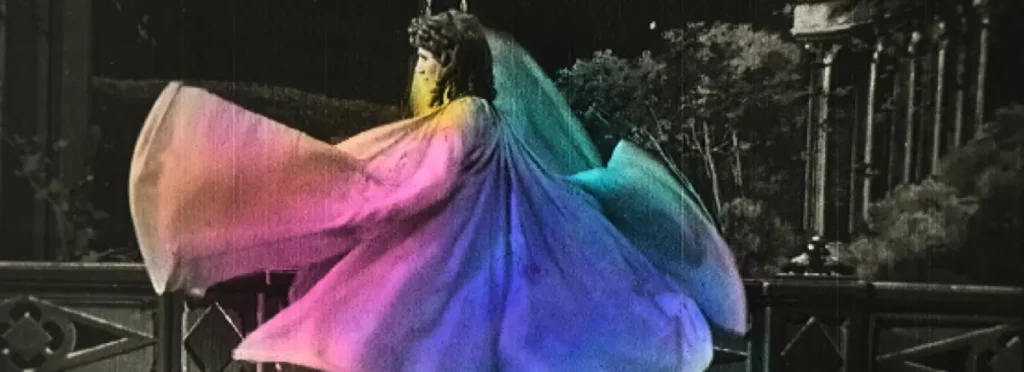
Salome Dance Launches Salomania
The modern interpretation of the Salome dance emerged through art dance movements at the turn of the 20th century. Performers such as Maud Allan, Loie Fuller, Adorée Villany, Ida Rubinstein, Aida Overton Walker, and Ruth St. Denis brought Salome to life through stylized—often scandalous—performances. Drawing from ballet, Orientalist spectacle, modern dance, and avant-garde provocation, their interpretations blurred the line between art and sensuality. From royal endorsements to public outrage, these women captivated audiences and provoked lasting controversy.
→ Read more about provocative Salome-inspired art dance

Salome the Vamp: Salomania and the Movies
Salomania swept early cinema as directors across Europe and America reimagined Salome in silent film. Starting in 1901 Hungary, Salome embodied sensual rebellion. Florence Lawrence starred in Vitagraph’s Salome (1908), followed by Theda Bara’s scandalous 1918 version, which made headlines for its lavish eroticism. Alla Nazimova’s 1923 avant-garde take was a critical flop but later hailed as visionary. Other portrayals—by Gloria Swanson, Marcella Albani, and Jetta Goudal—reinforced Salome’s image as a seductive femme fatale. These silent-era films show how Salome captivated audiences and symbolized transgressive modern femininity onscreen.
→ Read more about the Salome Films
Salome FAQs
Q: Who was Salome in the Bible?
A: The Bible (Mark 6:21—29 and Matthew 14:6—11) and the Roman historian Flavius Josephus describe Salome as a Jewish princess, daughter of Herodias and step-daughter of King Herod. She danced before the king and, at her mother’s insistence, demanded the severed head of John the Baptist on a silver platter as a reward.
Q: Who did Salome dance for?
A: In the Bible Salome danced for Herod Antipas, the tetrarch of Galilee. He was celebrating his birthday with his courtiers and high-ranking officials. Her performance greatly impressed Herod, leading him to make a rash promise to grant her any wish she desired.
Q: What is the Dance of the Seven Veils?
A: The Dance of the Seven Veils is not mentioned in the Bible. It is a later artistic and literary invention, popularized by Oscar Wilde’s play 1891 play “Salomé” and Richard Strauss’s 1905 opera of the same name. Those works depict Salome performing a sensual dance, gradually removing seven veils, before making her fateful request.
Q: Why did Salome ask for John’s head?
A: The Bible says Salome asks for John’s head at the behest of her mother Herodias, who seeks revenge on John for denouncing her marriage. In Oscar Wilde’s 1891 play and Richard Strauss’s 1905 opera, Salome herself wants the head for revenge because John rejected her amourous advances.
Q: Why did Salome hate John the Baptist?
A: According to the Bible, it was Salome’s mother Herodias who truly hated John the Baptist. John had publicly criticized Herodias’s marriage to Herod Antipas as unlawful, as she had been married to his brother. To satisfy her mother’s vengeance, Salome asked for John’s execution after her dance, carrying out Herodias’s deadly grudge.
Q: Why was Salome controversial?
A: Salome sparked controversy both in Scripture and on stage. In the Bible, her dance before King Herod led to John the Baptist’s beheading. Later, Oscar Wilde’s 1891 play and Richard Strauss’s 1905 opera cast her as a dangerously seductive femme fatale, whose alluring “Dance of the Seven Veils” challenged moral boundaries and scandalized Victorian society.
Q: How did Salome die?
A: The Bible does not record the death of Salome. A medieval legend claims Salome met a gruesome end: she fell through an icy river and the sharp frozen water decapitated her. In Oscar Wilde’s 1891 play, Herod orders a soldier to kill Salome after she received John’s severed head.
Q: What was Salomania?
A: Salomania was a theatrical dance craze and cultural phenomenon of the early 1900s. Oscar Wilde’s 1891 play and Richard Strauss’s 1905 opera spurred provocative “Dance of the Seven Veils” stage acts that both thrilled and scandalized audiences. These shows—often featuring bare midriffs and sensual choreography—pushed the boundaries of acceptable entertainment, shocking the era’s standards of good taste.
For Further Reading

